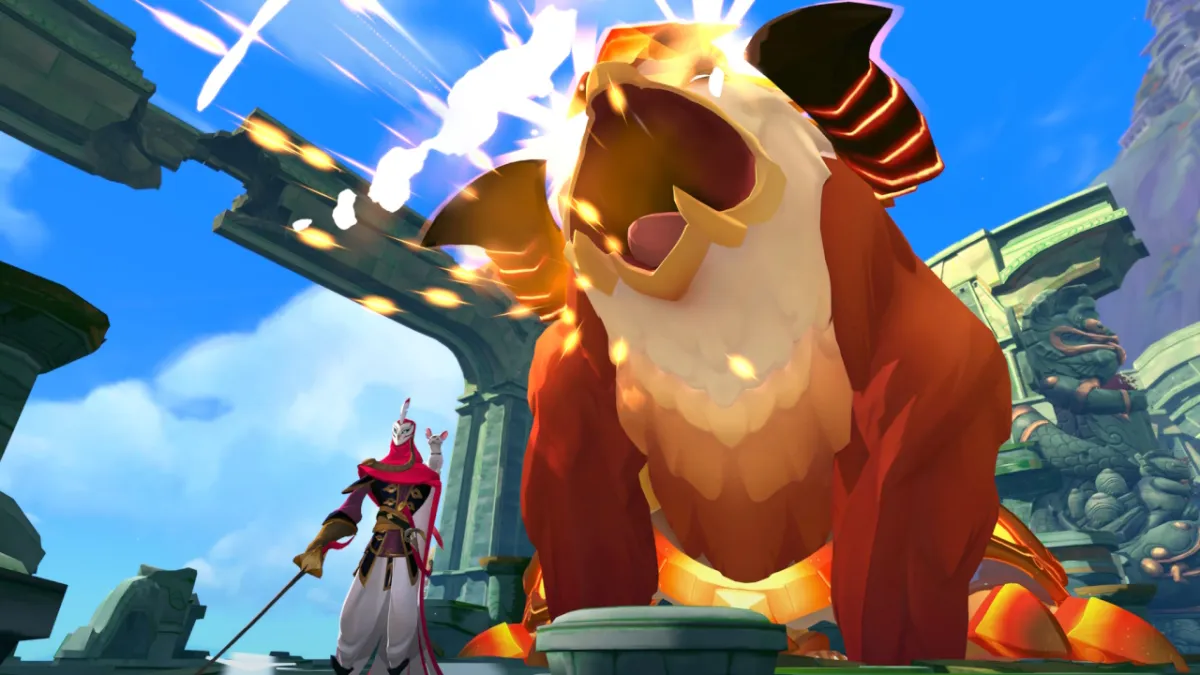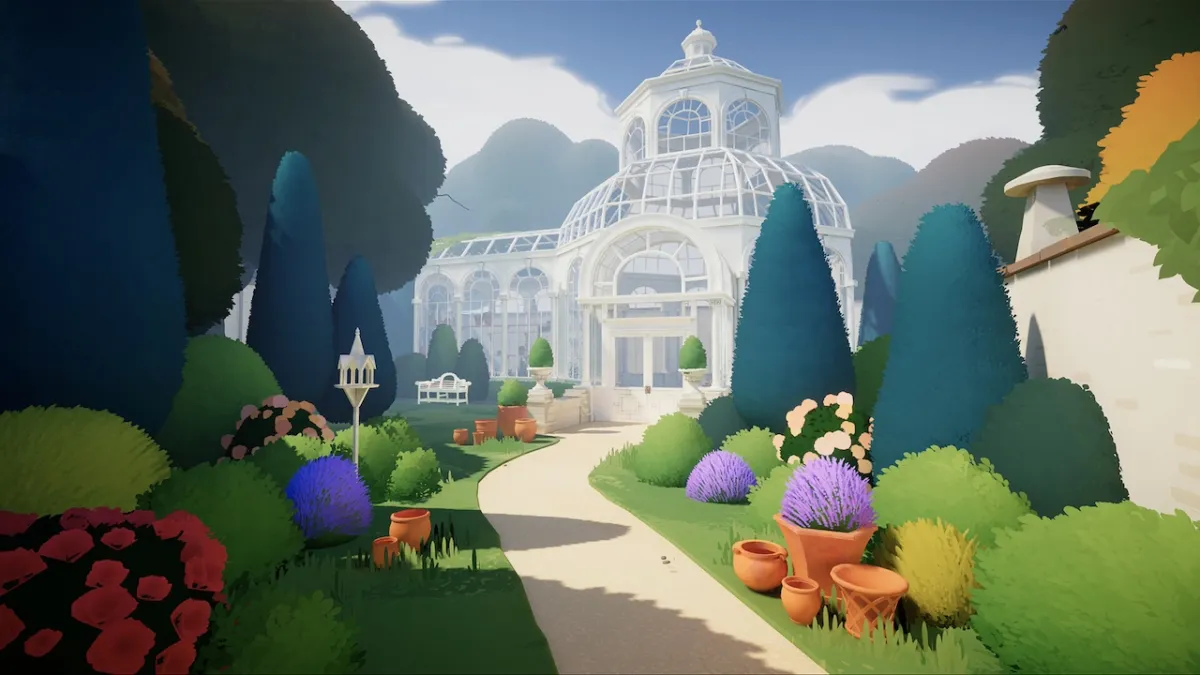The other day I was watching a TED Talk by a designer who was stressing just how quickly people will make a judgement about an item or object based on how it looks. Videogames, to a degree, are subject to the same phenomena; and it’s something that won’t do Arcen Games’ A Valley Without Wind (AVWW) too many favours.
Individually, the pieces of this procedurally generated 2D platfom-and-explore-and-craft-and-shoot-em-up look pretty fine. Removed from a wider context the trees look pretty decent, lone enemy types like the rhinos and whispy energy beasts look alright, and the player characters are perfectly functional. Mashed together though, it … doesn’t quite work. Some of the textured wallpapers which violate the interiors of certain buildings deserve a special mention too; not just for being hard to look at, but for their ability to hide enemies and spell effects. I don’t think I’ve encountered that problem since Amiga-era platformers.
The reason I’m covering this before getting to the guts of the game is that it’s important to realise that everyone’s initial impression of AVWW is going to be based on what is by far its weakest aspect. I’ve already seen this on forums and news sites across the internet. People take one look at the eclectic art style, possibly leave an insulting comment, and vow never to even give the title a try.
This is unfortunate (something of a curse even), because there’s an awful lot beneath AVWW’s somewhat offputting exterior and much of it is worth investigating.
You are a glyphbearer in a weird and wonderful fragmented world. Some sort of terrible cataclysm has occurred (you know the sort), leaving just a few settlements of human survivors beset on all sides by dangerous wildlife and oppressed by ruling Overlords.
Although the vast majority of the time is spent in 2D side-scroll-o-rama (of the type illustrated by the screens around this piece), each ‘continent’ has a top-down map, divided into squares that represent each region. From this map, you can tell if a square has some sort of mission on it, and what the terrain is like (this encompasses almost every natural terrain type, from snow to grasslands to desert and beyond). Each region is itself divided into chunks, and each of these may have entrances to buildings or caves for you to explore. Said entrances lead you to new environments, also divided into chunks. Pretty much everything here is procedurally generated, so you’ll never see exactly the same level twice.
Thankfully, there’s an introductory mission which explains and guides you through a lot of this (as well as the basics of combat and equipping your character). It’s also handy that there are a number of warp gates dotted around the place, allowing easy and rapid travel between areas you’ve already visited. As a result, boring backtracking is almost none existent.
AVWW employs something that I’m going to call ‘focused free-roaming’. You can go almost anywhere you want to (including waltzing straight up to the Overlord’s door if you fancy dying), but it’s a better idea to go to places with useful resources and rewards. You’re never lacking structure or goals, thanks to the ‘things you should do’ section in your in-game planner. This simple bit of guidance is terrific, listing out a selection of objectives it’d be wise to pursue, but not actively forcing you into any of them or dictating which order you have to do them in.
As a result, your time will be mixed between hunting (or earning) resources to upgrade your spell section (long range, short range and movement-boosting spells are your armory), improving your character through creating enchantment boosts or finding upgrade spheres, and undertaking missions like clearing a building of bosses or rescuing a would-be survivor. Later, you’ll also be upgrading your settlement and constructing buildings like wind shelters (which expand the territories you can explore).
How you go about your resource-gathering is kind of up to you. It’s possible to scavenge inside buildings, delve down inside deep caverns, or just do missions and be rewarded in resources. Each terrain type has its own set of resources however, so if you fancy upgrading, say, your fireball spell (one of fifty currently in the game), you can check the Big Honkin’ Encyclopedia (it’s really called this) and find out which region is most likely to contain the resource you need to complete construction of the spell.
Missions pop up on the world map as you progress and offer specific rewards (spelled out before you start the mission, so you know what you’re getting). They come in multiple forms, including (but certainly not limited to) boss towers, in which you clear out three mini-bosses from the floors of a building; stealth assassinations, where you’re encouraged to sneak around tougher enemies and find the boss room; and battlegrounds, during which you attempt to lead your AI troops across a chunk of the map to take down an enemy base before they can do the same to you.
As you complete missions the ‘continent tier’ increases, reminiscent of the AI level creeping up in Arcen’s previous title AI War. This offers you greater rewards, but also ups the level of all the enemies. In a similarly AI War-inspired move, the more of a certain enemy type you slay, the faster they will develop (for example, murder countless bats and you’ll soon be facing deadly fire bats that breathe eagles, or something). This means your foes will tend to match you step-by-step, and forces a certain amount of strategy when considering if an action will increase the continent tier and whether you’re ready for that just yet.
Travels around the 2D world sections remind me a little of past greats like Turrican and Shadow of the Beast. The platforming is fairly restrained, free of any tight, pixel-perfect jumps and made even easier thanks to crates and platforms that you can deploy at your leisure (assuming you haven’t run out). Combat is a little on the floaty side, but functional enough, and as you get deeper into the game it’s possible to find yourself engaged in some fairly demanding firefights where dodging multiple enemy projectiles is crucial to survival.
[video2=2892]
Fighting isn’t aided by the default control scheme of mouse and keyboard, however. Using the mouse to aim is fine up to a point, but you may find that the user interface (bits and pieces like the message log and your inventory bar) sometimes gets in the way. Gamepad (specifically a 360 controller) and pure keyboard options are open to you too, but neither really alleviates this problem. Nor do any of the control schemes make it any easier to switch between spells while trying to dodge away from foes with specific magic resistances.
If you die during any of these encounters (and you will, eventually), that character is gone for good, bound to the world only through their vengeful ghost which may haunt the site of their death. Luckily, almost everything (aside from limited upgrades to health, mana and spell power) will transfer to your new hero. Perma-death is a fact of … er … life in AVWW, though you can mitigate it slightly by taking down the customisable combat difficulty a couple of notches (you can do the same with platforming difficulty too; or, of course, boost it).
Should you wish to invite a fiend into your AVWW world, full co-op is also possible. I tried this out with fellow IncGamers scribe Tim McDonald and found it to be much the same as the single player mode. Enemies were a little tougher, and it was possible for us both to be undertaking completely different missions on opposite parts of the map at the same time. That would rather defeat the purpose though, which is obviously to make the game more of a social experience and open new tactical avenues in combat. You may, though, need some technical knowledge of port-forwarding to get co-op working.
Like AI War, I’ve found AVWW to be a game which I greatly admire but don’t necessarily love. It’s a project whose ambition is clear and a game which offers an awful lot of scope for playing ‘your way’. While I don’t find either the combat or the platforming sides of the title to be spectacular, I do feel they’re both strong enough to support the overall design philosophy. The focused free-roaming through procedurally generated realms (now there’s a sentence for people unfamiliar with videogame terminology) is a very successful formula for drawing the player into the title, and I’ve found myself being lured back to the game a fair bit in my spare moments.
Thanks to Arcen’s proven track record in supporting titles, I can say with confidence that AVWW will only continue to expand and improve. The art style is probably here to stay, but this title may well be the ultimate videogame allegory for the message “it’s who you are on the inside that counts”.



